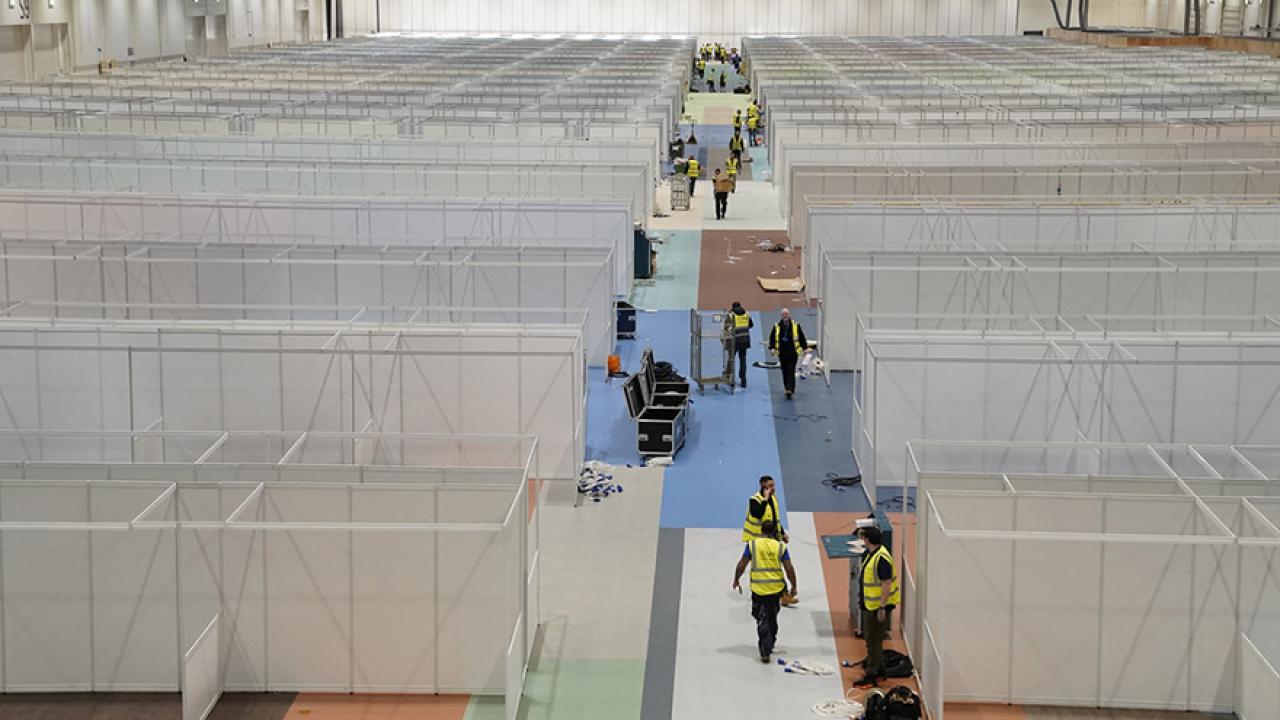A 750-word summary of a Blavatnik School of Government report by Professor Ciaran Martin, Dr Hester Kan and Maximillian Fink.
Reading time: 3–4 minutes.


The COVID-19 pandemic was a two-year crisis – a ‘long emergency’. For the UK and many other countries, it was the most enduring and severe population-level crisis since the Second World War.
Such once-in-a-lifetime events might become the new normal, thanks to climate change and other factors. Whether a crisis is health-related, war-related, weather-related, cyber-related, or supply-related, ‘long emergencies’ have certain features in common: very widespread impact; changes to normal life; a need for complex, interconnecting interventions; and a prolonged duration over which both the crisis and the crisis response evolve. Governments need to prepare.
The report aims to help them do so by learning lessons from COVID-19. Looking primarily at the UK but also at Italy, Germany, Australia and Singapore, it examines how crisis preparations and structures played out over the first half of 2020, and what this tells us about the crisis management functions, overall capabilities, and overall coordination states need for the future.
Examples of lessons governments can act on now
Prioritising crisis alertness and preparedness is an obvious step currently missing from many countries. In Singapore, an underlying alert-to-danger mentality, evident not only across government but the entire culture, hugely benefitted the COVID-19 response.
Governments should ‘bake in’ agility so crisis plans can adapt immediately to the presenting realities of the next emergency, and so responses can evolve as the crisis evolves. Training people to be innovative; setting up structures that can take and retake decisions at speed; and scrutinising plans and simulations for their adaptability to different presenting realities (something missing from the UK’s flu pandemic preparation) are all advance actions governments can take.
Boosting government’s ability to work with the private sector gets it ready for scenarios when government capacity alone will never be enough (such as, in COVID-19, population-wide testing). The report recommends developing a rapid procurement framework for use in emergencies, and getting more skills and knowledge into the civil service on working with the private sector.
COVID-19 showed that countries’ preparedness for a cross-cutting crisis was not just – or even primarily – about their specific crisis plans. Rather, it was a function of a state’s overall condition, including its coordination mechanisms, the strength of particular sectors, and overall state capacity. Those countries with tried-and-tested coordination between central and local government based on trusting working relationships generally fared better, for example.
The UK’s COVID-19 experience
The pandemic tested and stretched not just every aspect of the crisis-response system, but state capability as a whole. The report looks at three areas in depth:
- COVID-19 tested the crisis management capacity of the state to the extreme
- Capabilities (such as testing) were needed at population scale within very short timeframes, requiring the mobilisation of state and private sector capability at incredible pace. The report looks at six crucial examples: PPE, testing, contact-tracing, economic support, school closures, and vaccines.
- A complex, multi-agency government response was needed for a nationwide emergency at all levels of government, requiring very complex coordination across many different parts of government, from local to central levels.
In the UK and potentially other countries, government should consider:
- Regular audits of the capabilities of key crisis response institutions (p.55)
- Plans and simulations that emphasise agility and adaptation (p.58)
- Multi-department planning for major crisis scenarios, including Treasury input (p.61)
- Better live data- and evidence-gathering, from a broader base (p.64);
- Reform of the emergency procurement framework (p.85);
- Crisis management training for many more civil servants (p.85);
- Getting serious about building local capability (p.103);
- Transforming central–local coordination mechanisms (p.104);
- Taking a long, hard look at how devolution works in a crisis (p.124); and
- Learning how to learn from other countries in real time (p.124).
And looking across all five countries studied (Chapter 4), ten key factors that support success are:
- Prioritising crisis preparation (p.166)
- Knowing who is supposed to do what in a crisis... (p.166)
- ...But leaving room for agility and creativity (p.167)
- Effectively bringing together the central and the local... (p.167)
- ...And the international... (p.168)
- ...And the private sector (p.168)
- Having a clear legal framework for emergencies (p.169)
- Knowing how to use expertise (p.169)
- Securing public trust (p.170)
- Having the stamina to keep evolving (p.170)
Take a deeper dive into the report and its recommendations:
Skim the Executive Summary and skim through the pull quotes dotted through the full report, which will allow you to find sections of interest.
Read the Executive Summary in detail and skim Chapters 1–3.
Skim the Executive Summary, and read in detail the synthesis of findings from across the five countries in Chapter 4.
Great! Once you’ve read the report, if you’d like to discuss further with the authors or invite them to speak, contact ruth.collier@bsg.ox.ac.uk
Executive Summary: 12 pages
Full report: 180 pages
